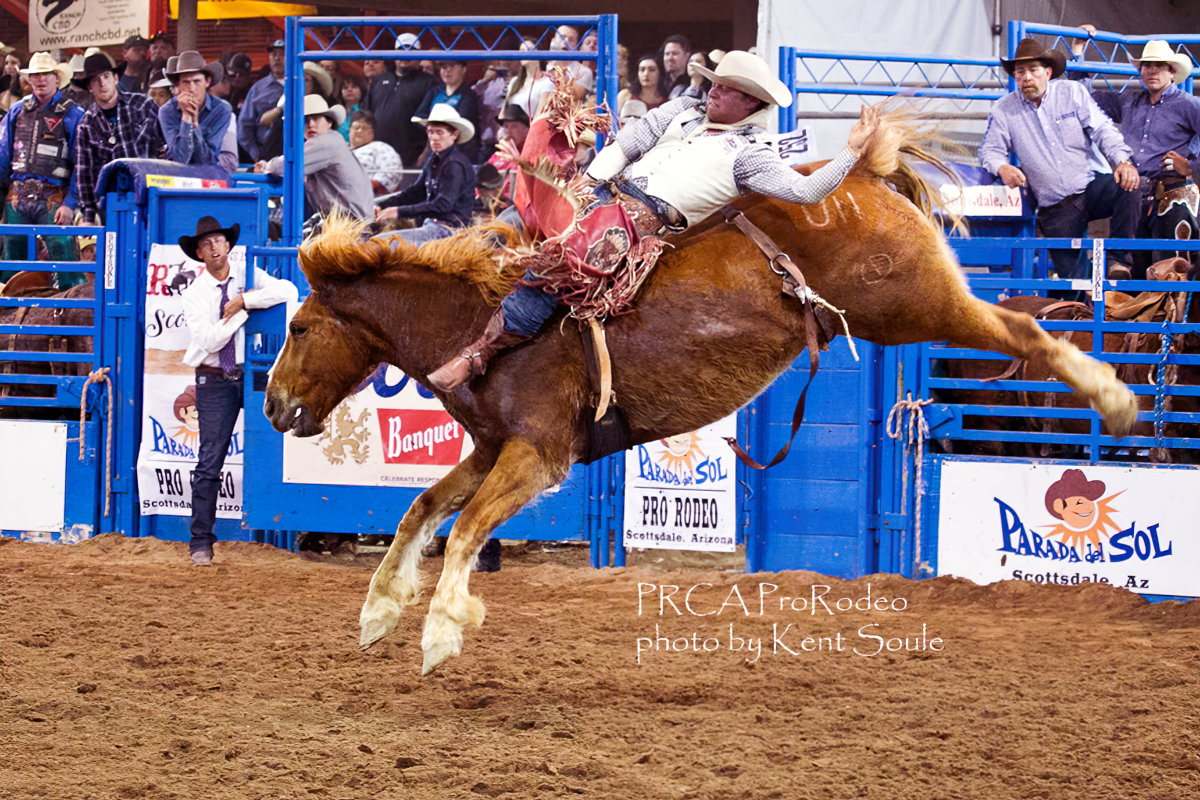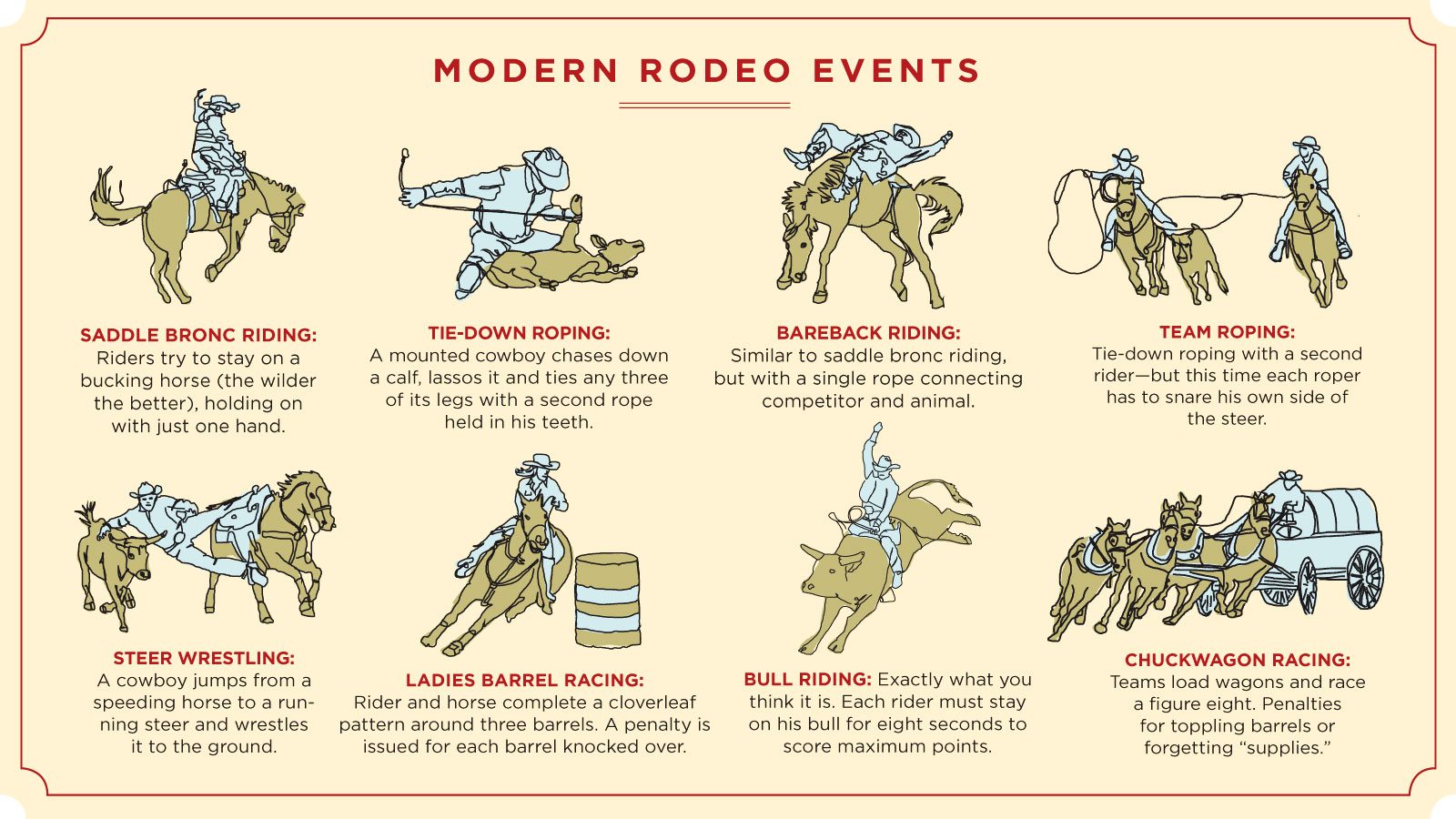
Rodeos encompass a variety of competitive equestrian sports and events, stemming from the working practices of cattle herding. These events are broadly categorized into roughstock events and timed events [1] [2] [3] [4]. Beyond these core categories, rodeos can also be classified by the demographic of participants, the sanctioning body, and geographical location [1].
According to [www.iAsk.Ai - Ask AI](www.iAsk.Ai - Ask AI):
Types of Rodeos by Event Category
- Roughstock Events: These events involve cowboys and cowgirls riding bucking animals, with scores based on both the rider's performance and the animal's bucking action [2] [3] [4].
- Bareback Riding: Riders hold onto a rigging with one hand and must stay on a bucking horse for eight seconds, with specific spurring techniques required [1] [3] [4].
- Saddle Bronc Riding: Considered the classic rodeo event, riders use a specialized saddle without a horn and hold onto a bronc rein for balance, also for eight seconds [1] [3] [4].
- Bull Riding: Cowboys ride full-grown bucking bulls for eight seconds, a highly dangerous event where balance and mental toughness are crucial [1] [3] [4].
- Timed Events: These events focus on speed and precision, with contestants aiming for the fastest time [2] [3] [4].
- Tie-Down Roping (Calf Roping): A cowboy ropes a running calf, dismounts, throws the calf to the ground, and ties three of its legs together. The horse is trained to keep the rope taut [1] [3] [4].
- Team Roping: The only team event, involving two riders (a "header" and a "heeler") who work together to rope a steer's horns and hind legs, respectively [1] [3] [4].
- Steer Wrestling (Bulldogging): A cowboy jumps from a galloping horse onto a steer and wrestles it to the ground by its horns [1] [3] [4].
- Barrel Racing: Primarily a women's event in professional rodeo, horse and rider gallop around a cloverleaf pattern of barrels, aiming for the fastest time without knocking them over [1] [3] [4].
- Breakaway Roping: A variant of calf roping where a short lariat is tied to the saddle horn with a string. When the calf is roped, the string breaks, stopping the clock without the calf being thrown or tied [1] [3].
Less Common and Specialized Rodeo Events
- Goat Tying: Typically for women or younger participants, a mounted rider races to a staked goat, dismounts, throws the goat, and ties three of its legs [1]. This is not part of professional rodeo competition [1].
- Steer Roping: A single roper ropes a steer around the horns, then around its back hip, causing it to trip so its legs can be tied. This event is less common due to injury risks and animal cruelty concerns and is banned in some areas [1].
- Pole Bending: A speed and agility event where horse and rider weave through a line of six upright poles [1].
- Steer Daubing: Seen at lower competition levels, a rider attempts to place a paint mark within a circle on a steer's side using a long stick [1].
- Chute Dogging: A training event for steer wrestling where a pre-teen boy enters a chute with a small steer, then wrestles it to the ground after it exits the chute [1].
- Steer Riding: A rough stock event for children, where they ride steers similar to bull riding [1].
Types of Rodeos by Participant and Sanctioning Body
- Professional Rodeos: Governed by organizations like the Professional Rodeo Cowboys Association (PRCA) and the Women's Professional Rodeo Association (WPRA) in the United States [1]. These often culminate in major events like the National Finals Rodeo (NFR) [1].
- High School and Collegiate Rodeos: Sanctioned by associations such as the National High School Rodeo Association (NHSRA) and the National Intercollegiate Rodeo Association (NIRA) [1].
- Youth Rodeos: Associations like the American Junior Rodeo Association (AJRA) and National Little Britches Rodeo Association (NLBRA) cater to younger participants [1].
- Specialty Rodeos: Include events for Native Americans (e.g., All Indian Rodeo Cowboys Association, Indian National Finals Rodeo), seniors (National Senior Pro Rodeo Association), and the LGBTQ+ community (International Gay Rodeo Association) [1].
- International Rodeos: Rodeos are popular in Canada (Canadian Professional Rodeo Association), Mexico (Federación Mexicana de Rodeo), Australia (Australian Professional Rodeo Association), New Zealand (New Zealand Rodeo Cowboys Association), and Brazil (Confederação Nacional de Rodeio, PBR Brazil) [1].
Related Equestrian Sports and Cultural Events
While not strictly "rodeos" in the American competitive sense, several related events share historical roots and similar skills:
- Charreada: The national sport of Mexico, a display of roping and riding skills with origins in colonial Mexican ranching. It emphasizes finesse and grace over speed and is considered an amateur sport [1].
- Coleo: A traditional Venezuelan and Colombian sport where llaneros on horseback pursue cattle at high speeds to tumble them [1].
- Chilean Rodeo: The national sport of Chile, where a team of two mounted men attempts to pin a calf against cushions in an arena [1].
- Jaripeos: Popular in El Salvador, similar to rodeos, often celebrated during local festivities [1].
- Bushmen's Carnivals: The Australian equivalent of American rodeos, featuring events like buckjumping, bullock riding, and campdrafting [1].
Rodeos are a dynamic blend of sport, tradition, and entertainment, showcasing the skills developed from historical ranching practices across various cultures [1] [3].
Authoritative Sources
- Rodeo. [Wikipedia]↩
- Rodeo 101. [National Western]↩
- The Top Eight Different Events You'll See at the Rodeo. [Ariat]↩
- WELCOME TO A CRASH COURSE IN RODEO. [Caldwell Night Rodeo]↩


Sign up for free to save this answer and access it later
Sign up →